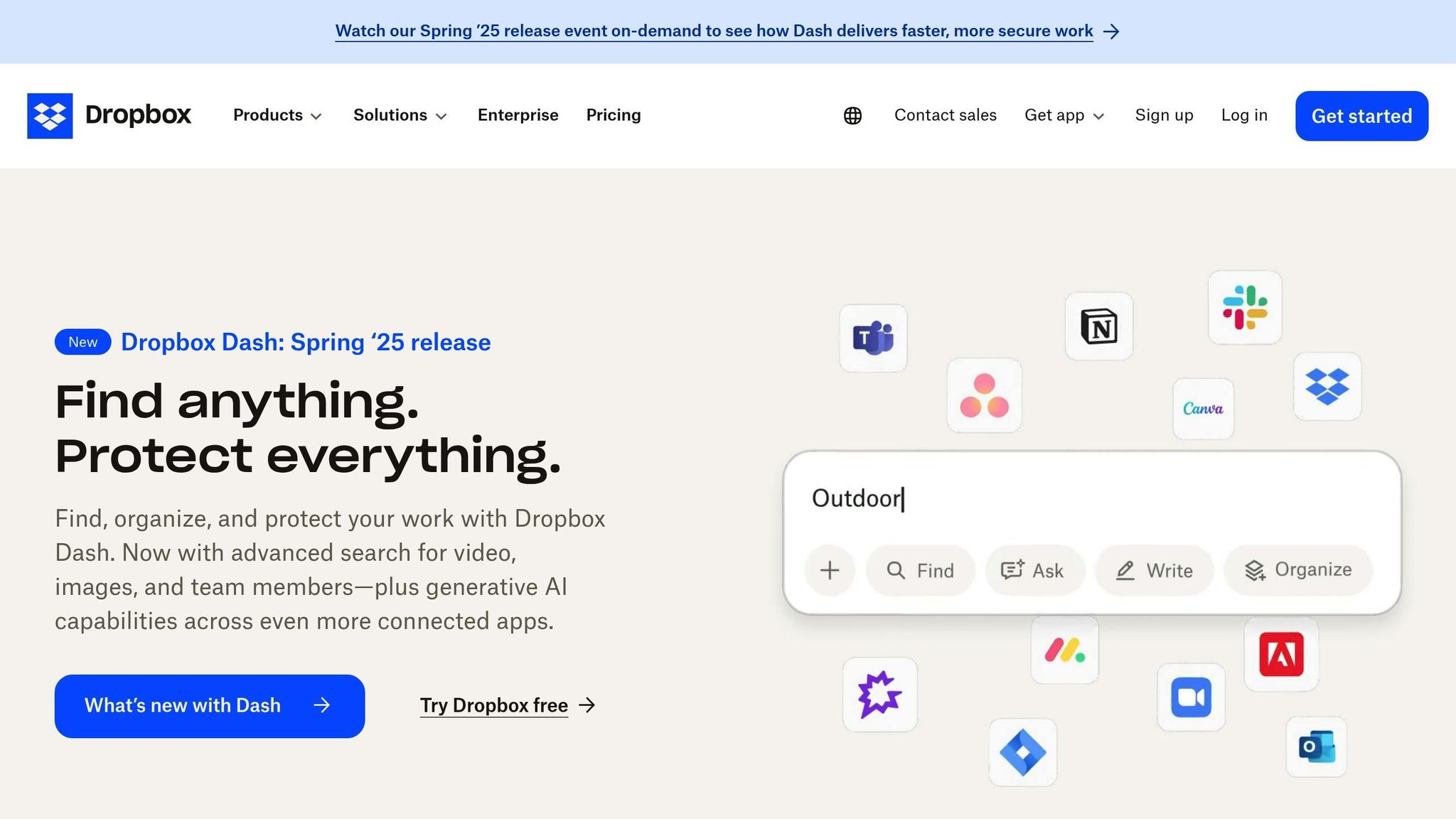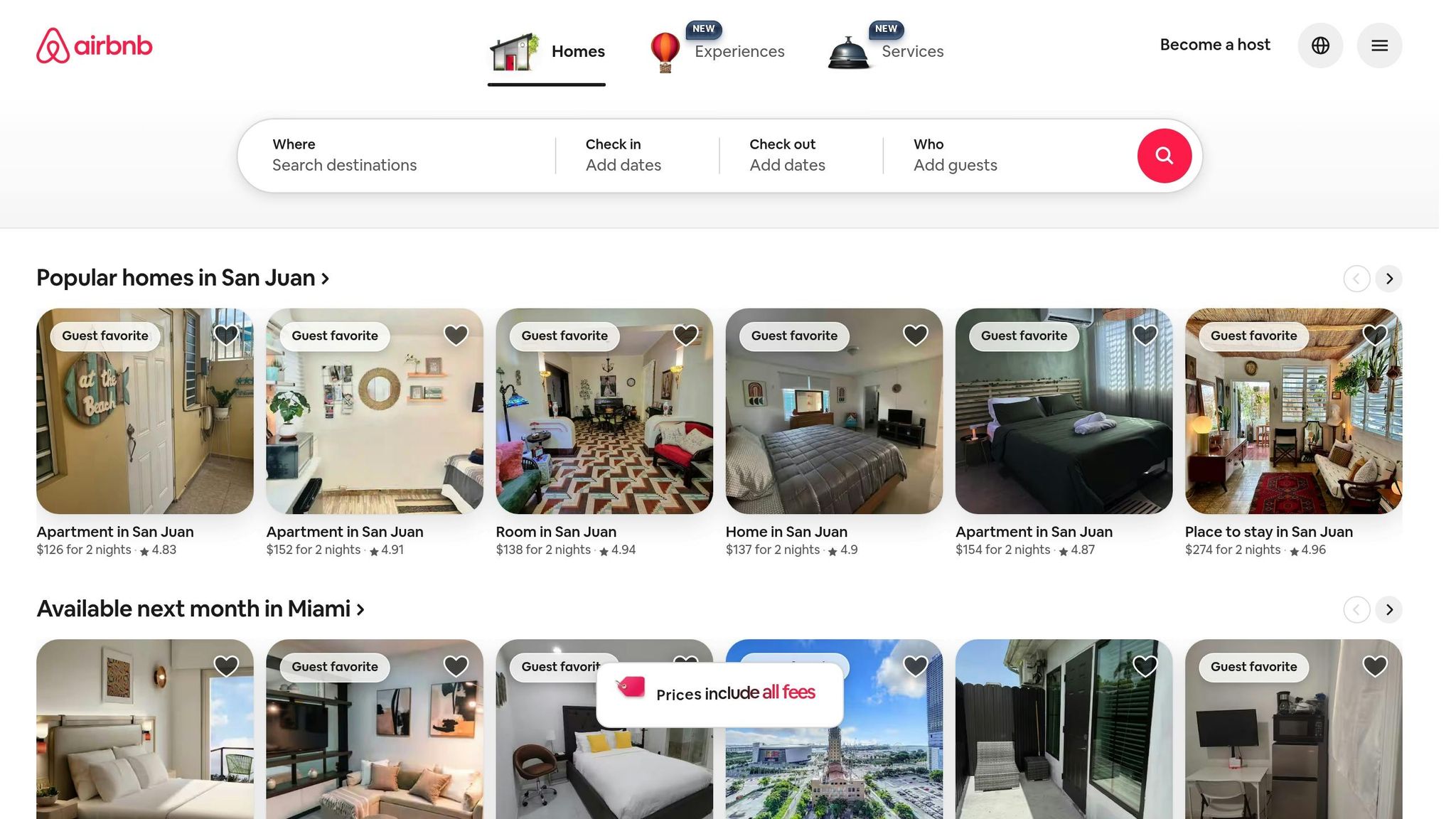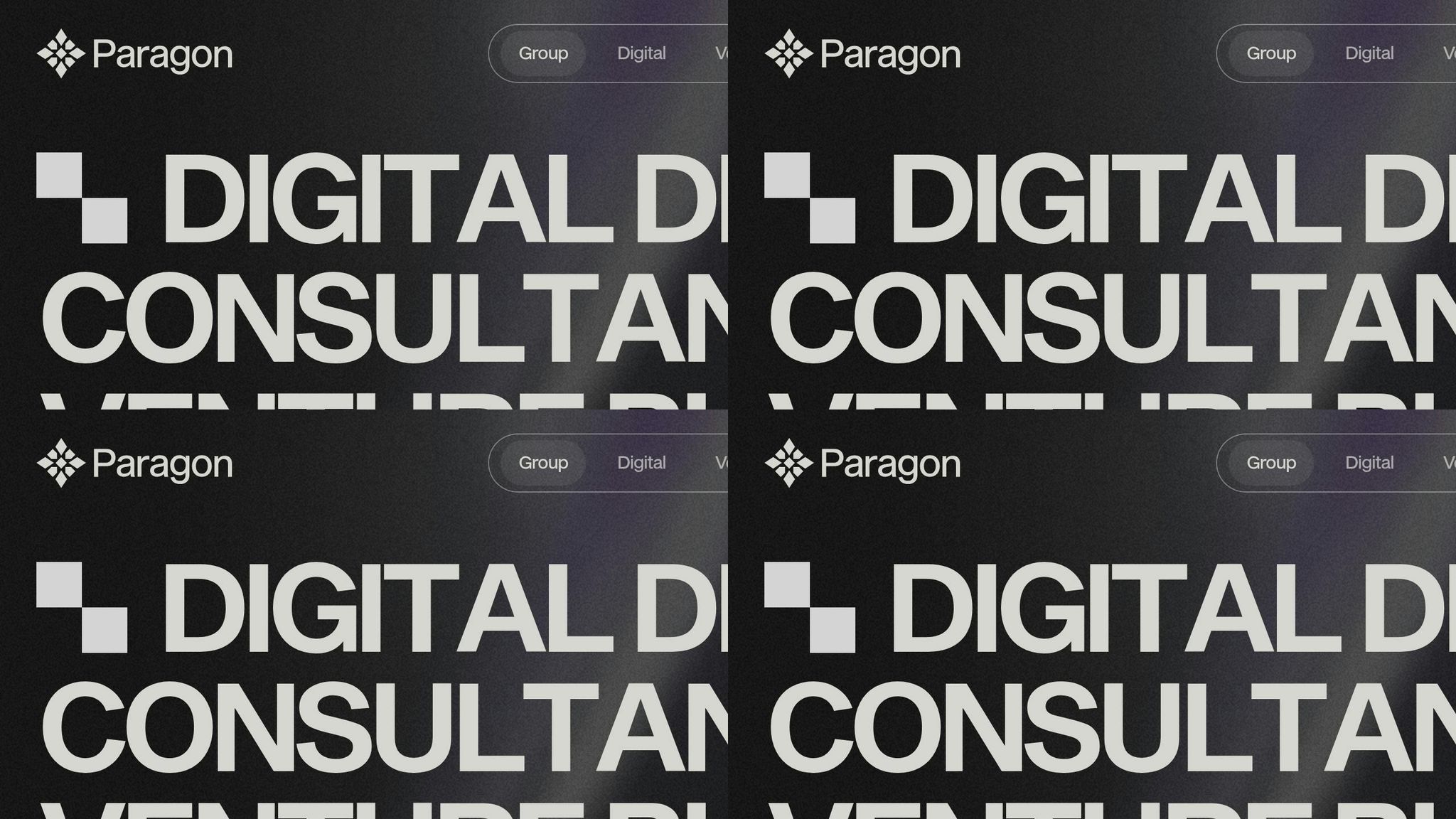Iterative design is the key to building better products faster. It’s a process where startups build, test, and improve products in cycles based on user feedback. This approach helps save time, reduce costs, and create products that users actually want.
Why It Works:
- Start with an MVP: Launch a simple version of your product to test demand (e.g., Dropbox’s demo video attracted 75,000 users).
- Engage Users Directly: Gather feedback early and often (e.g., Airbnb founders improved listings by working with hosts).
- Focus on Flexibility: Build modular systems for faster updates (e.g., ParentPulse launched in 4 months by iterating quickly).
Key Benefits:
- Shorter time-to-market
- Lower development costs
- Better user engagement and satisfaction
Pro Tip: Track metrics like user engagement, conversion rates, and churn to measure progress after each iteration.
Want to see how startups like Dropbox, Airbnb, and ParentPulse succeeded with iterative design? Keep reading for detailed case studies and actionable tips.
What Is Iterative Design? – BusinessGuide360.com
Case Studies of Iterative Design
These examples showcase how the build-measure-learn cycle can validate ideas, refine products, and create market momentum.
Dropbox: Validating Demand with an MVP

When Dropbox founder Drew Houston set out to create a file synchronization service, he faced a big question: Would people even want it? Instead of diving straight into development, Houston tested the waters with a simple MVP – a 3-minute video. The video, sprinkled with easter eggs for the Hacker News community, explained how Dropbox would work. The result? The beta waiting list skyrocketed from 5,000 to 75,000 practically overnight [4].
This overwhelming interest prompted Dropbox to roll out a closed beta, allowing users to try the product and share feedback. This feedback shaped improvements to the user interface and key features [2].
"A Minimum Viable Product is ‘a version of a new product which allows a team to collect the maximum amount of validated learning about customers with the least effort.’" – Eric Ries, author of The Lean Startup [3]
By 2019, Dropbox had grown to a staggering 14.3 million paid users, generating $1.66 billion in revenue [4].
Airbnb: Earning Trust Through Direct Feedback

Airbnb faced a hurdle common to marketplace platforms: trust. To tackle this, the founders decided to get hands-on. Back in 2009, after receiving $20,000 in funding from Y Combinator, they flew to New York – their largest market at the time – and worked directly with hosts. They helped improve listings by taking better photos, adding useful details, and clarifying expectations [5].
This personal approach revealed trust-related pain points. To address them, Airbnb introduced a review system that allowed both hosts and guests to evaluate each other. The Superhost program followed, recognizing top-performing hosts [5].
"Every review benefits the entire network, allowing hosts to assess the suitability of a guest before confirming their booking and guests to assess the trustworthiness and professionalism of a host before sending a booking enquiry." – Dolnicar and Reinhold, 2021 [5]
Airbnb also routed all transactions and communications through its platform, enhancing safety and transparency. The introduction of AirCover, which includes $3 million in damage protection, further boosted user confidence [5]. Today, Airbnb boasts over 4 million hosts and has welcomed more than 1 billion guests globally, with a valuation exceeding $90 billion [5].
ParentPulse: Rapid Development with Modular Design

ParentPulse, a SaaS platform for Christian schools, took a fast and focused approach to its iterative design. CEO Ryan Ermeling partnered with DevSquad, and in under four months, they launched an MVP. Using a design sprint methodology – complete with collaborative workshops, rapid prototyping, and user testing – they created a lightweight, modular product built on Laravel [6].
This modular setup not only allowed ParentPulse to bootstrap its way to profitability but also supported continuous improvements. The team adopted a dual-track agile process, running discovery sprints for new ideas alongside development sprints to enhance the existing product [6].
"They would think through these problems and challenges and opportunities like they were their own, bring these ideas that I hadn’t even been thinking of and together we’d make the product better on an iterative basis. I love that teamwork component." – Ryan Ermeling, CEO and founder of ParentPulse [6]
These stories highlight how listening to users and making quick, thoughtful adjustments can lead to remarkable growth and success.
Lessons from Successful Iterative Design
The journeys of Dropbox, Airbnb, and ParentPulse highlight some clear strategies that startups can use to turn user feedback into measurable growth.
Common Patterns in Iterative Success
Start with validation, not perfection. Dropbox’s early success with its MVP (Minimum Viable Product) shows the power of testing demand with a simple, functional product before diving into full-scale development.
Engage directly with users. Airbnb’s founders took a hands-on approach by visiting key markets and interacting directly with hosts. This approach uncovered insights that raw data alone couldn’t provide. As Airbnb co-founder Joe Gebbia explained:
"We had this Silicon Valley mentality that you had to solve problems in a scalable way because that’s the beauty of code." [9]
Their direct engagement led to small but impactful changes, like improving listing photos and tweaking icons, which significantly boosted both revenue and user engagement.
Build flexible, modular systems. ParentPulse’s modular design approach allowed for a fast launch and ongoing refinements. This adaptability helped them respond to evolving user needs effectively.
By following these patterns and keeping an eye on the right metrics, startups can create a strong iterative design process.
Important Metrics to Track
Metrics are essential for confirming that each iteration adds real value. Research shows that usability improvements average 38% per iteration, while targeted KPIs see an average improvement of 22% per iteration [7].
Here are some key metrics to focus on:
- User engagement and feedback velocity: These metrics highlight how quickly user input is gathered, analyzed, and acted upon. Faster feedback loops lead to quicker, more effective improvements.
- Conversion funnel metrics: Track where users drop off by monitoring signup rates, onboarding completion, and time to first value. These insights tie design changes directly to business outcomes like higher conversion rates and revenue.
- Customer lifetime value and churn: These metrics reveal the long-term impact of your iterations, helping distinguish between fleeting engagement spikes and lasting improvements.
Startups should align their metrics with their growth stage. Early-stage companies should focus on validation metrics like user interest and problem-solution fit. Growth-stage startups can prioritize conversion and retention, while mature businesses should aim to optimize customer lifetime value and expand into new markets.
"Great design is the iteration of good design." – M Cobanli, Founder, OMC Design Studios [8]
sbb-itb-d9ba0f3
How Paragon Group Supports Iterative Design for Startups

The iterative design process isn’t just about having a great idea – it’s about consistent execution, technical know-how, and the agility to adapt quickly based on user feedback. For startups juggling product development and business growth, this can feel like a monumental task. That’s where Paragon Group steps in, offering the support needed to keep the design process on track while startups focus on their big-picture goals.
Studies show that companies using iterative design are 80% more likely to launch successful products, while iterative prototyping can cut time to market by 43% [10]. Paragon Group helps startups achieve these numbers by providing the tools and expertise to streamline iteration cycles, making the process both efficient and effective.
Here’s a closer look at how Paragon Group empowers startups at every step of the iterative design journey.
Complete Design Solutions
Paragon Group offers a full suite of services that address every aspect of the iterative design process. By integrating directly with startups, they provide end-to-end support that makes product iteration seamless.
- UI/UX Design: Paragon focuses on creating intuitive, user-friendly interfaces that enhance engagement. This approach is particularly valuable during rapid prototyping, where startups need to test and refine early versions of their products [1].
- Product Design: Each iteration is crafted to be both functional and appealing, ensuring the product meets changing market needs. This aligns with user-centered design principles, which prioritize tailoring products to how users think and behave [1].
- Branding Services: Startups often struggle to maintain a consistent brand identity as their products evolve. Paragon addresses this by building adaptable brand frameworks that grow with the business.
- Website Development: A responsive, user-friendly website is critical for launching and testing products quickly. Paragon delivers sites that support fast deployment cycles, keeping startups agile.
A standout example of Paragon’s approach is their work with Confer Technologies, a Boston-based startup specializing in endpoint security software. Paragon transitioned Confer’s website from Joomla to WordPress, creating a custom mobile-friendly theme and tailoring plugins to showcase careers, blogs, and resources. They also integrated Salesforce web-to-lead forms and Zendesk support tools, helping Confer capture leads and enhance customer service [12]. This kind of comprehensive solution allows startups to focus on product development without worrying about their online presence.
Continuous Design Support During Iterations
Launching a product is just the beginning. Iterative design thrives on constant refinement and adaptation, and Paragon Group ensures startups have the ongoing support they need to keep improving.
Their unlimited design request model allows startups to submit changes and receive updates within 1-3 days. This quick turnaround eliminates the delays often associated with traditional design agencies, enabling startups to act on feedback immediately.
Paragon’s design support services function as an extension of the startup’s team, covering everything from graphic design to marketing materials. This ensures that as products evolve, all supporting assets remain polished and aligned with the brand.
Take Happy Returns, for example. Paragon created three animated explainer videos tailored to different customer segments. They refined the styleframes based on feedback to better match the target audience and streamline the visuals. After Happy Returns was acquired by PayPal, they continued working with Paragon, commissioning Shopify app explainers, Return Bar demos for both the US and UK, and translated versions of software demos [11]. This ongoing partnership highlights how Paragon’s flexibility supports startups as they grow and pivot.
Paragon also leverages cloud-based collaboration tools and live commenting features, making it easy to gather and implement feedback in real time. This infrastructure, combined with their design expertise, ensures startups can navigate rapid prototyping cycles smoothly, turning ideas into market-ready products that stand out.
Next Steps for Startups
Key Insights
The case studies point to one undeniable truth: successful startups don’t just create products – they embrace a cycle of learning and adapting. This ongoing refinement is what separates startups that thrive from those that struggle to achieve product-market fit.
Here’s a compelling stat: projects that actively involve end-users during the design phase can cut rework costs by 80% [13]. This underscores the importance of designing based on real user needs rather than relying on assumptions.
These lessons pave the way for a practical and straightforward framework that startups can put into action right away.
Implementation Framework
Using these insights, startups can adopt a structured, iterative process. Here’s how to get started:
Set clear objectives and dive into user research. Before building anything, define what success looks like and understand your audience. Who are you building for? Why? Companies that use analytics effectively enjoy 20% higher profitability compared to their competitors [13]. Spend time gathering data on your users’ needs and behaviors – it’s an investment that pays off.
Focus on rapid prototyping. Tackle one problem at a time with low-fidelity prototypes. These don’t need to be polished; the goal is to test ideas quickly. Research shows that testing with just 50 users can reveal 85% of usability issues [13]. Prioritize actionable feedback over perfection.
Create strong feedback loops. Use tools like surveys, interviews, and analytics to gather both numbers and stories. Keep surveys short and time them strategically – like right after a user completes a task – to catch issues early. Iterative development can reduce time-to-market by up to 30% [13].
Track progress and document everything. Measure metrics that matter to your goals, whether it’s user engagement, conversion rates, or feature adoption. Take Spotify as an example: by letting user insights guide its roadmap, the company saw a 35% jump in feature adoption rates [14].
Stay flexible with resources. Keep some budget and time available for unexpected challenges. Be ready to pivot based on the feedback you gather during each iteration.
Start small: focus on one feature, prototype it quickly, and test it within two weeks. The insights you gain from that first cycle can often teach you more than months of internal planning ever could.
FAQs
What is the best way for startups to use iterative design to achieve product-market fit?
Startups can tap into the power of iterative design to find that sweet spot where their product meets market needs. The key? Keeping the focus on user-centered design and making continuous feedback a priority.
It all starts with understanding what users want. This means diving into research to uncover their needs and pain points. From there, create a minimum viable product (MVP) – a basic version of your product that serves as a foundation. Test this MVP with real users to see how it performs in the wild and gather feedback on what works and what doesn’t.
With this feedback in hand, refine the product through multiple rounds of prototyping, testing, and tweaking. By repeating this cycle, the product naturally evolves to better align with market demands, reducing the chances of investing time and resources into features users don’t care about. Along the way, keeping an eye on user behavior and conducting market research will help guide decisions, ensuring the product not only satisfies users but also builds their loyalty.
What metrics should startups focus on during each iteration to track progress and make better decisions?
Startups need to keep an eye on key metrics that shed light on product performance and user behavior. One of the most important is customer satisfaction, which can be gauged through surveys or feedback tools. These insights help businesses understand how well their product addresses user needs.
Metrics tied to user engagement – such as daily active users (DAU), session duration, and retention rates – offer a clear picture of how effectively the product keeps users coming back and staying engaged. On the revenue side, conversion rates reveal how efficiently visitors are being converted into paying customers, while the churn rate highlights the percentage of users who stop using the product.
Another critical measure is the Net Promoter Score (NPS), which provides a snapshot of customer loyalty and overall satisfaction. Consistently tracking these metrics enables startups to fine-tune their offerings and stay in sync with what the market demands.
How does iterative design help startups save time and money while bringing products to market faster?
Iterative design allows startups to save both time and money by breaking the development process into smaller, repeatable cycles. This method gives teams the chance to test ideas, collect user feedback, and make adjustments early in the process. By catching issues sooner rather than later, startups can avoid costly mistakes and focus on creating products that genuinely meet market needs.
Another advantage of this approach is how it streamlines the creation of a minimum viable product (MVP). With iterative design, startups can launch faster and begin collecting meaningful feedback from actual users. Unlike traditional methods that rely on rigid, upfront planning, this process offers the flexibility to adapt quickly based on user input or shifts in market trends.